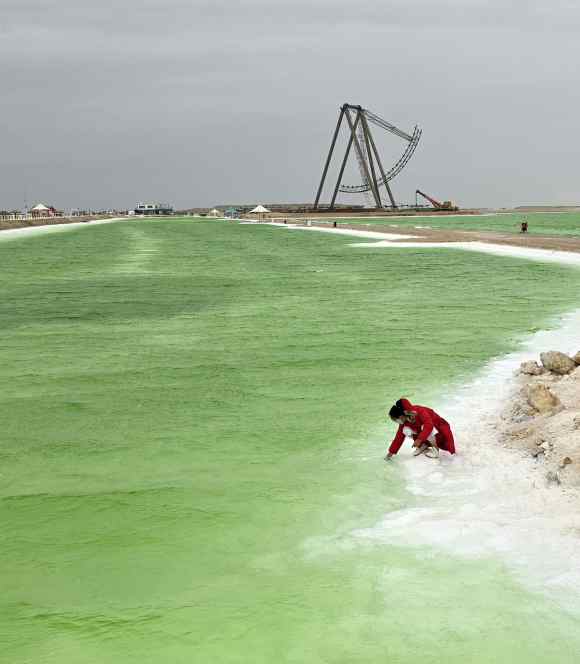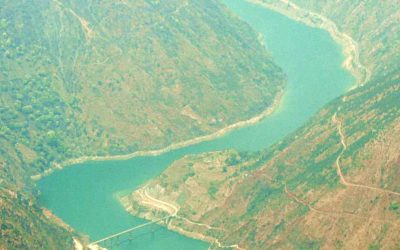Discover China’s Largest and Most Beautiful Salt Lake
The development of tourism and transportation in China is bringing to light places that were previously very hard to access and virtually unknown. Some of these destinations are beginning to gain a certain reputation, at least among those of us who keep up with the latest news in tourism and travel in China. One such place is Qarhan Salt Lake in Qinghai Province, just between Tibet and the Silk Road..
Better Than the Famous Qinghai Lake
While the province of Qinghai has long been known for its namesake lake—called Kokonor by the Mongols—this other lake remained little known and was only mentioned in a few very specific guides as a secondary or complementary visit. However, having visited both lakes, I believe Qarhan is far more beautiful and much more interesting. I had the bad luck of visiting on a cloudy day with very strong wind. I think I got a small taste of the famously unpleasant wind of the Changtang Plateau. At times, it really felt like the wind could blow me straight into the water.
A Beautiful Beach on a Stunning Lake
What visitors usually see is actually a beach on this enormous lake, which spans 5,800 square kilometers. Until the 1950s, no one paid much attention to it, although it was known to the Mongols living in the area, who gave it its name. Later, with the onset of economic development, it was discovered that a salt lake could provide many chemical compounds useful for the country’s growth. Several industries were established on its shores. Some of these still exist, and travelers pass through their production facilities on the way to the most beautiful part of the lake.

Emerald Green Waters on a Salt Beach
The beach stands out mainly for the intense green color of its waters and the contrast between the white salt along the shore, the vivid green hue of the water in that area, and the blue of the sky—when it is blue—or the gray, as it was during my visit, which also created a truly striking contrast. In keeping with the poetic spirit with which natural elements are often described in China, some of the most beautiful spots have been given names that allude to jade—found in this region—and to emerald, whose color the waters imitate.
A Visit Worth Making
This is actually the largest salt lake in China and the second-largest in the world. The lake is just 60 km from the city of Golmud. There’s a public bus in the morning and another in the afternoon, and hiring a taxi is not expensive (around 200 yuan for the round trip, including waiting time, in the low season of 2025). The visit can take about two to three hours, including the transfer from the entrance gate, but on a good day, it can easily be extended or even turned into a full-day excursion.
About me: I have spent 30 years in China, much of the time traveling and studying this country’s culture. My most popular research focuses on Chinese characters (Chinese Characters: An Easy Learning Method Based on Their Etymology and Evolution), Matriarchy in China (there is a book with this title), and minority cultures (The Naxi of Southwest China). In my travels, I have specialized in Yunnan, Tibet, the Silk Road, and other lesser-known places. Feel free to write to me if you’re planning a trip to China. The travel agency I collaborate with offers excellent service at an unbeatable price. You’ll find my email below.
Last posts
The Grand Canal of China
The Grand Canal of China The Grand Canal was first built during the Sui Dynasty (581-618). Its original design resembled a "Y" whose leg would point west, as it connected the rich lands of the Yangtze River delta with the capital Luoyang on one side and the capital...
Basic Geography of China
Basic Geography of China The People's Republic of China, with an area of more than 9,600,000 km2 is the third largest country on our planet, after Russia and Canada. The name China derives from the name given to it by its neighbors, because the Chinese call their own...
The religions of China
The religions of China Every people has the religion they inherit from their ancestors. This widely spread aphorism is truer in China than in other countries. Scholars say that the primitive religion of the Chinese, as of the peoples who lived near them, was the cult...
Notes on the Chinese theater
Notes on the Chinese theater The Chinese were extremely fond of theatrical performances. According to their traditions these originated in the time of Emperor Ming Huang of the Tang dynasty, later revered as the patron saint of actors, without whose help it is...
Taoist ceremony of repaying the debt
Taoist ceremony of repaying the debt Last week (on the 17th day of the fourth lunar month, 2018) took place at Zhenqing Temple (真庆观), the largest Taoist temple in Kunming and the best-preserved so far, the ceremony called "Repaying the Debt of Life". That ceremony is...
Classics of Filial Piety
Classics of Filial Piety Since the establishment of a Confucian society in the Han dynasty, some two thousand years ago, filial piety could be considered the central pillar around which Chinese society has been built. The behavior of each person towards his father...










